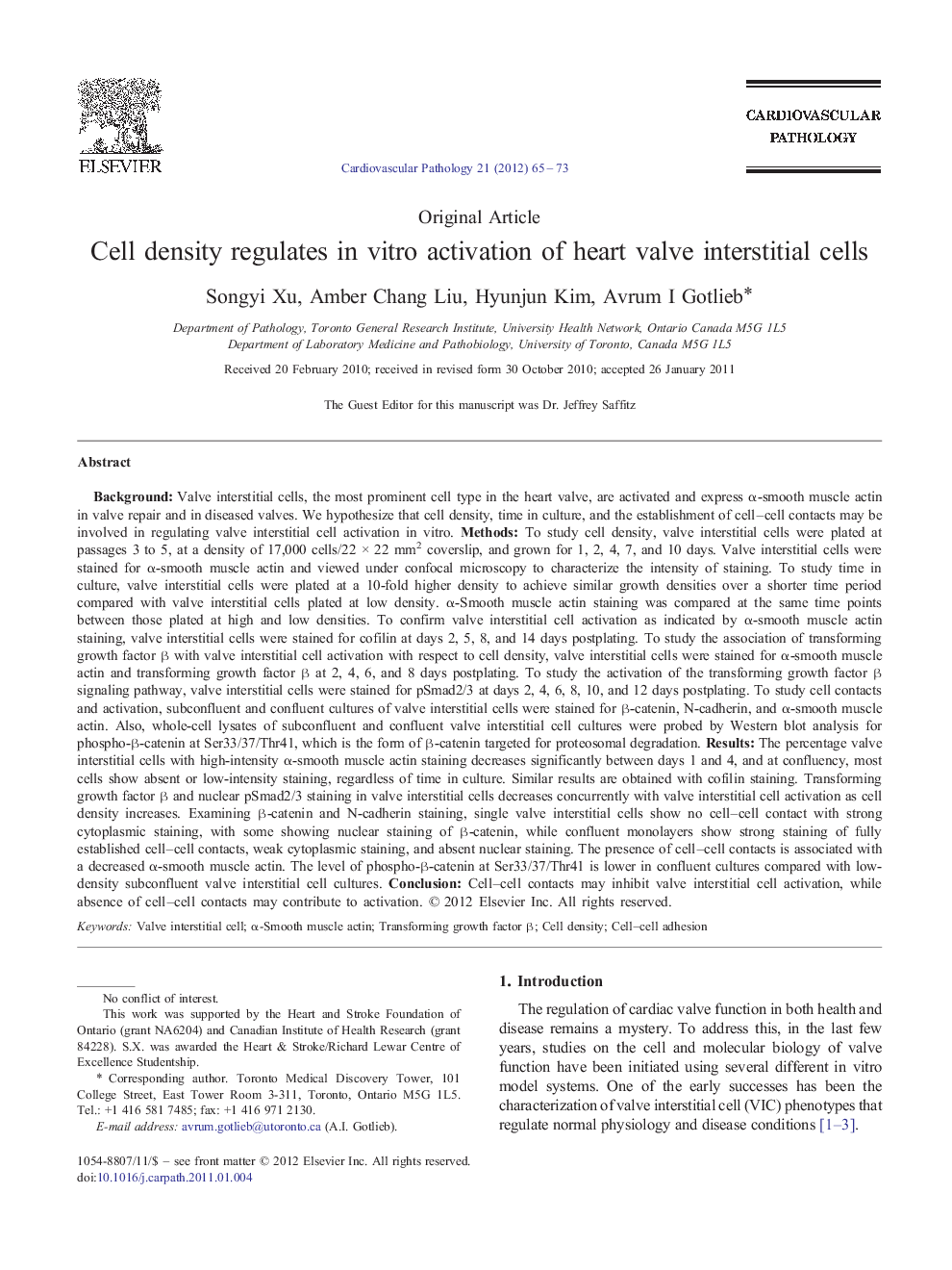| کد مقاله | کد نشریه | سال انتشار | مقاله انگلیسی | نسخه تمام متن |
|---|---|---|---|---|
| 2898787 | 1173100 | 2012 | 9 صفحه PDF | دانلود رایگان |

BackgroundValve interstitial cells, the most prominent cell type in the heart valve, are activated and express α-smooth muscle actin in valve repair and in diseased valves. We hypothesize that cell density, time in culture, and the establishment of cell–cell contacts may be involved in regulating valve interstitial cell activation in vitro.MethodsTo study cell density, valve interstitial cells were plated at passages 3 to 5, at a density of 17,000 cells/22 × 22 mm2 coverslip, and grown for 1, 2, 4, 7, and 10 days. Valve interstitial cells were stained for α-smooth muscle actin and viewed under confocal microscopy to characterize the intensity of staining. To study time in culture, valve interstitial cells were plated at a 10-fold higher density to achieve similar growth densities over a shorter time period compared with valve interstitial cells plated at low density. α-Smooth muscle actin staining was compared at the same time points between those plated at high and low densities. To confirm valve interstitial cell activation as indicated by α-smooth muscle actin staining, valve interstitial cells were stained for cofilin at days 2, 5, 8, and 14 days postplating. To study the association of transforming growth factor β with valve interstitial cell activation with respect to cell density, valve interstitial cells were stained for α-smooth muscle actin and transforming growth factor β at 2, 4, 6, and 8 days postplating. To study the activation of the transforming growth factor β signaling pathway, valve interstitial cells were stained for pSmad2/3 at days 2, 4, 6, 8, 10, and 12 days postplating. To study cell contacts and activation, subconfluent and confluent cultures of valve interstitial cells were stained for β-catenin, N-cadherin, and α-smooth muscle actin. Also, whole-cell lysates of subconfluent and confluent valve interstitial cell cultures were probed by Western blot analysis for phospho-β-catenin at Ser33/37/Thr41, which is the form of β-catenin targeted for proteosomal degradation.ResultsThe percentage valve interstitial cells with high-intensity α-smooth muscle actin staining decreases significantly between days 1 and 4, and at confluency, most cells show absent or low-intensity staining, regardless of time in culture. Similar results are obtained with cofilin staining. Transforming growth factor β and nuclear pSmad2/3 staining in valve interstitial cells decreases concurrently with valve interstitial cell activation as cell density increases. Examining β-catenin and N-cadherin staining, single valve interstitial cells show no cell–cell contact with strong cytoplasmic staining, with some showing nuclear staining of β-catenin, while confluent monolayers show strong staining of fully established cell–cell contacts, weak cytoplasmic staining, and absent nuclear staining. The presence of cell–cell contacts is associated with a decreased α-smooth muscle actin. The level of phospho-β-catenin at Ser33/37/Thr41 is lower in confluent cultures compared with low-density subconfluent valve interstitial cell cultures.ConclusionCell–cell contacts may inhibit valve interstitial cell activation, while absence of cell–cell contacts may contribute to activation.
Journal: Cardiovascular Pathology - Volume 21, Issue 2, March–April 2012, Pages 65–73